A recent statistic demonstrates the lack of uptake of regular physical activity amongst older adults. Nearly 9 in 10 (87%) of adults aged 65+ do not meet the physical activity guidelines, particularly the muscle strengthening component. In an age group that perhaps needs it most, this lack of activity and physical stimulation is concerning.
Older adults are recommended to participate in at least 30 minutes of moderate intensity physical activity on most, preferably all days. This could include brisk walking (including hills), cycling, tennis or swimming. Part of this weekly exercise should include at least 2 bouts of resistance, or strength training. This is where lean muscle mass and bone mineral density is both preserved and improved to off-set our natural age-related decline (a process called sarcopenia) in these areas and others.
Having worked with older adults for more than a decade at Restart, we are very familiar with the challenges that an ageing body presents. Typical ‘geriatric-syndromes’ such as frailty and cognitive decline can be multi-factorial and not simply due to a lack of physical activity.

Working with many adults within this age group has given me a thorough understanding of the main functional challenges that older adults regularly report and encounter. Common goals amongst this demographic reflect the importance of the 3 essential skills to maintain that I want to discuss in this blog.
Essential skill #1 – To stand from the ground un-aided
Many of us have heard an upsetting story of an older person we know who was unfortunate to have had a fall or incident at home which rendered them incapacitated and grounded for upwards of hours or even days. It’s a situation I never want to find myself in – to lack the mobility, strength and muscle power to not be able to stand from the ground without support.
It is our goal at Restart to equip each of our older patients with the skills and confidence to be able to get back on their feet from a variety of positions eg supine (on back), prone (on front) and side-lying. It’s not the most glamorous way to spend part of our appointment together, but its importance is far-reaching! We then can increase the challenge, by asking them to stand without for example using their right arm (in the case of a right arm wrist injury).
Often however, we need to regress this challenge to initially make it somewhat easier to perform. Click the picture below to see two regressions I often prescribe to my older patients to build their capacity to stand from the ground un-aided.
Essential skill #2 – Development and maintenance of a strong grip
I am a huge advocate of maintaining strong grip throughout all life phases. I have previously written about the importance of having strong hands in my blog 4 Reasons Why Improving Grip Strength Goes Beyond Opening Pickle Jars. As someone who loves to challenge myself in the gym, having strong hands is key to lifting my bodyweight upwards against gravity when doing pull-ups; key to getting any type of weight off the ground during lifting and carrying tasks; and key to pulling hard and strong on the rower!
But aside from the obvious benefits, such as removing almond butter lids and lifting furniture, the benefits of maintaining strong hands are both plentiful and sometimes surprising. A recent statistic I learnt regarding grip strength has stuck with me – those in the lowest quartile for grip strength (bottom 25% for your age and gender) have a 72% greater risk of developing Dementia when compared to those in the top quartile for grip strength (top 25% for your age and gender) (1). This statistic points to the importance of maintaining strong hands throughout all phases of life to reduce your risk of not only physical decline and frailty, but cognitive impairment/decline.
Further studies support such findings. A study by Marques and colleagues in 2020 showed that having more grip strength decreased the odds of depression symptoms by 30% for adults aged 50 to 64 years, and 47% for adults 65 years and older, when compared with those with the lowest grip strength.
In a nutshell, these alarming statistics express the importance of lifting weights and engaging in regular resistance training. As I pointed out above though, only 13% of older adults are achieving this. Any venture to reduce the rates of cognitive decline amongst older adults must include and strongly recommend regular resistance training to develop strong hands and resilient bodies!
To see my three tips for building a vice-like grip, click here.
Essential skill #3 – The ability to remain stable and balanced in a range of postures
To be able to stand from the ground un-supported as I’ve discussed above is great, but the preference is that you are well balanced enough to not have fallen or be stranded on the ground in the first place. Being on the ground by choice is one thing…being on the ground not by choice is another. This is where balance and stability training comes in.
At Restart we screen all our older adults for balance in the form of a single-leg balance test. We use the below age and gender-predicted normative data to discover someone’s risk of falls and associated injury:
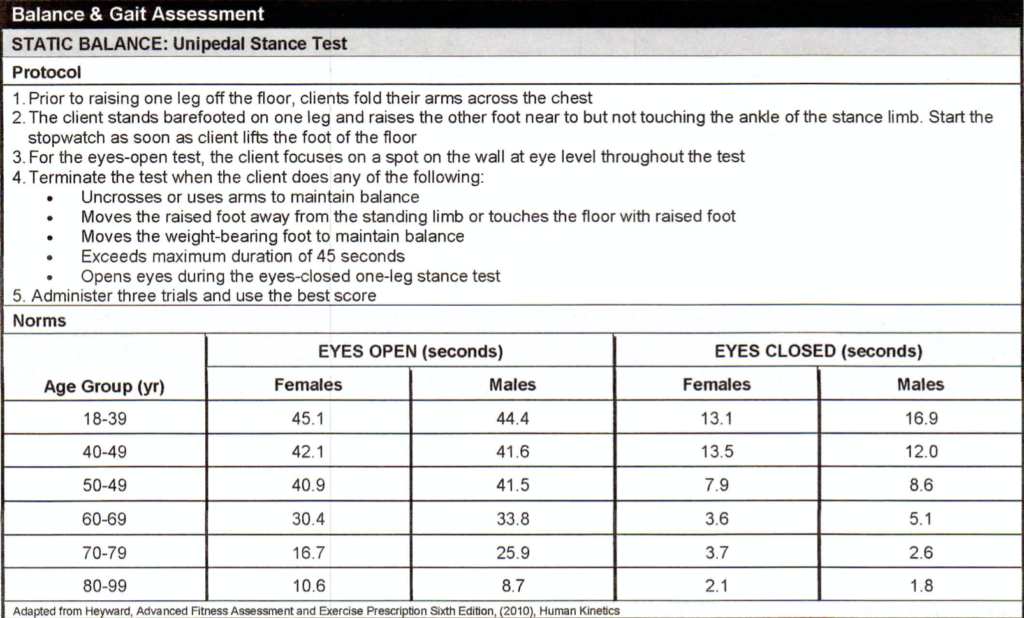
How do you rate?
Were you surprised by how much more difficult it is to stand on one foot when you closed your eyes?
This is due to our dependence on visual-system feedback – take this away by closing our eyes, and balance can be lost almost immediately. It is paramount that we train our two other balance systems – the vestibular-system (inner ear) and somatosensory-system (our perception of touch, and awareness of where our body is in space) to have well-rounded balance. Research shows that as we age we become even more dependent on our visual system for regulating our balance, which represents a dangerous combo when considering the following.
There is a well-established correlation between greater lower limb strength and improved balance. Any attempts to improve balance should not only focus on improving the above balance systems, but have an associated focus on building a strong lower body. When 87% of older adults aren’t engaging in enough physical activity, including resistance training, age-related muscle mass decline will proceed unchecked. It’s therefore no surprise that adults aged 65+ are over-represented when it comes to both injuries (and deaths) related to falls.
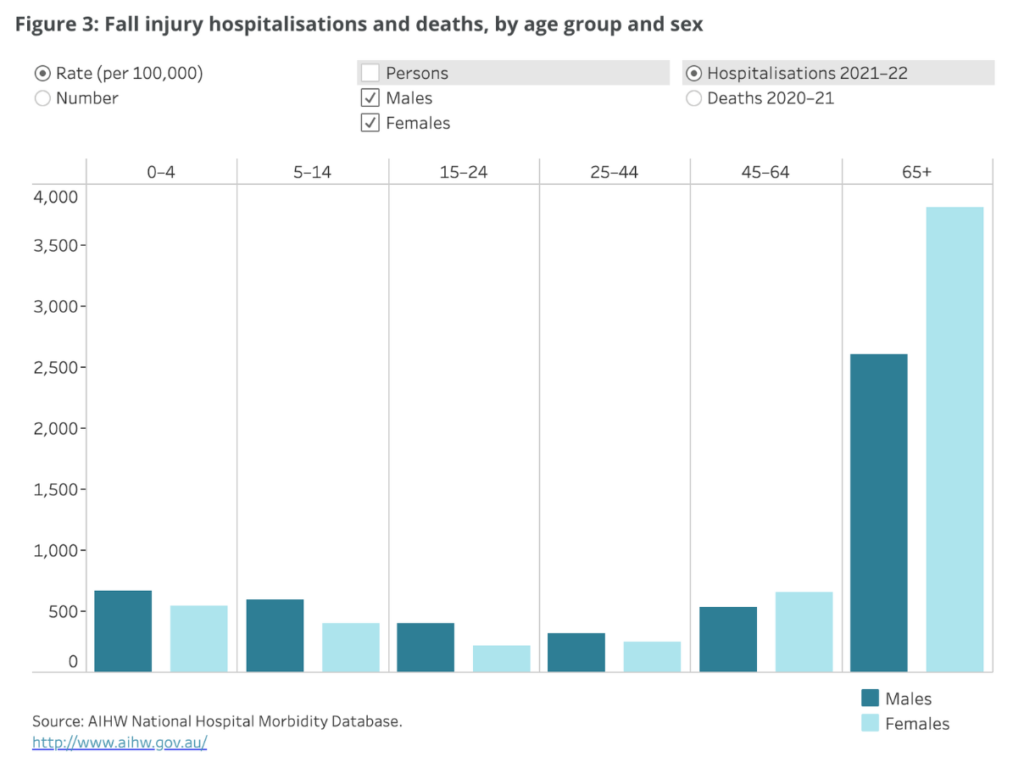
We encourage our patients within this age demographic to regularly practice balance training at home (always in a safe environment) on top of their lower-body strength training. This one-two combo typically sees an improvement in not only balance, but balance confidence, gait speed and stability, and overall functional capacity.
For some safe and age-appropriate at-home balance training ideas, try Nicola’s exercises (click the pic below):
Conclusion
If you find engaging in the recommended 30 minutes of daily exercise difficult right now, start with just 10 minutes once or twice a day. After a couple of weeks, increase this to 15 minutes twice a day.
One of the best things about exercise is that there is no upper limit to its benefits – when you do more than 30 minutes per day, you will be rewarded with extra benefits.
As an older adult, if your lifestyle goals are focused on being able to play and interact with your grandchildren; to travel abroad with confidence in your capacity to tackle stairs, hills and cobblestone streets, or to live independently in the home you love for as long as possible, then regular physical activity is a must!
We understand that physical activity, especially resistance training can be a little daunting for some. If you are unsure where to start, or require guidance on the best types of exercise for you and your unique self, then contact Restart today.
Restoring, and maintaining your ability to perform the above 3 essential skills will go a long way to ensuring your latter years are full of life!
Yours in health,
Luke
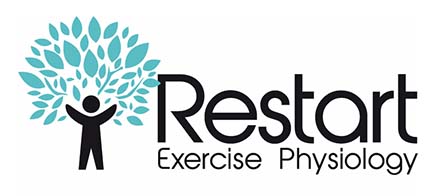
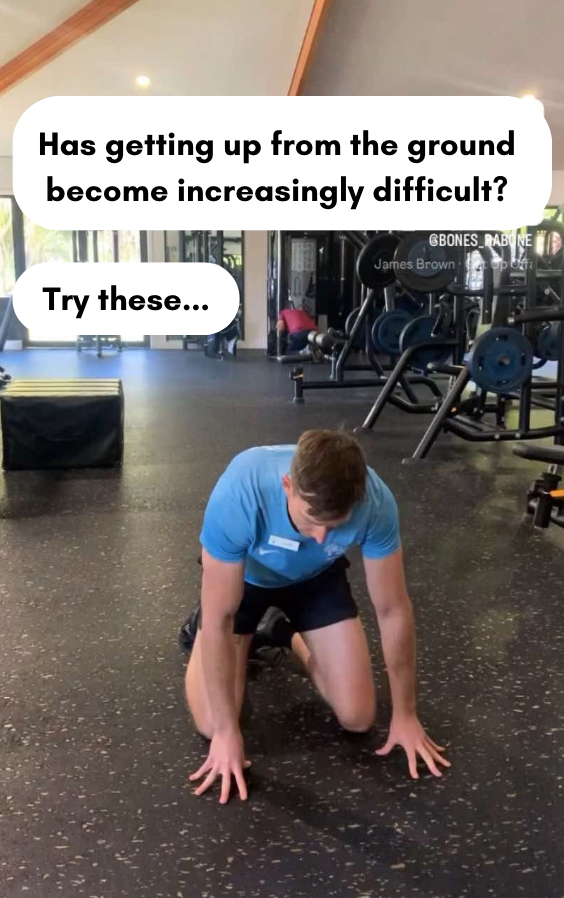
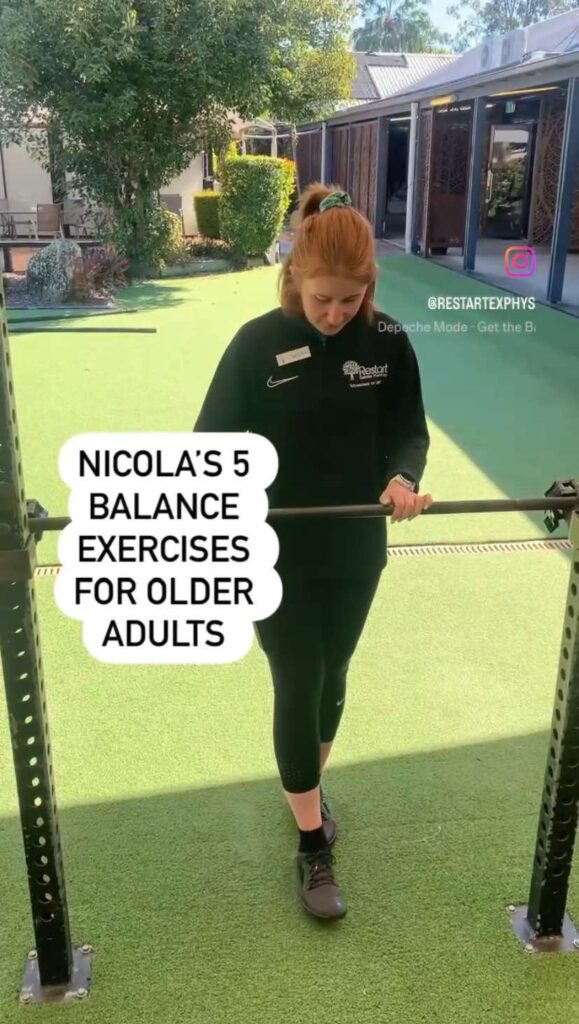
0 Comments